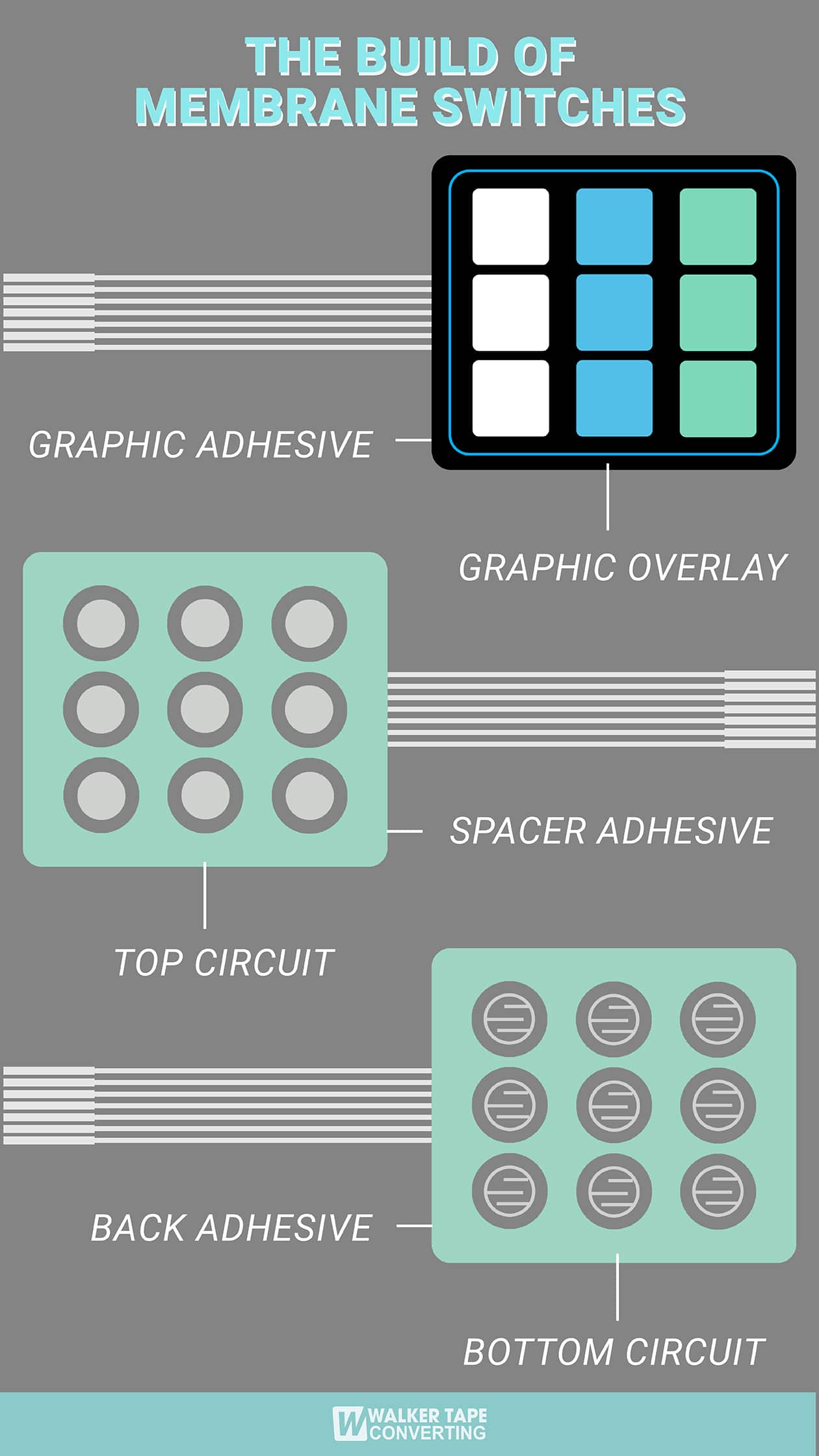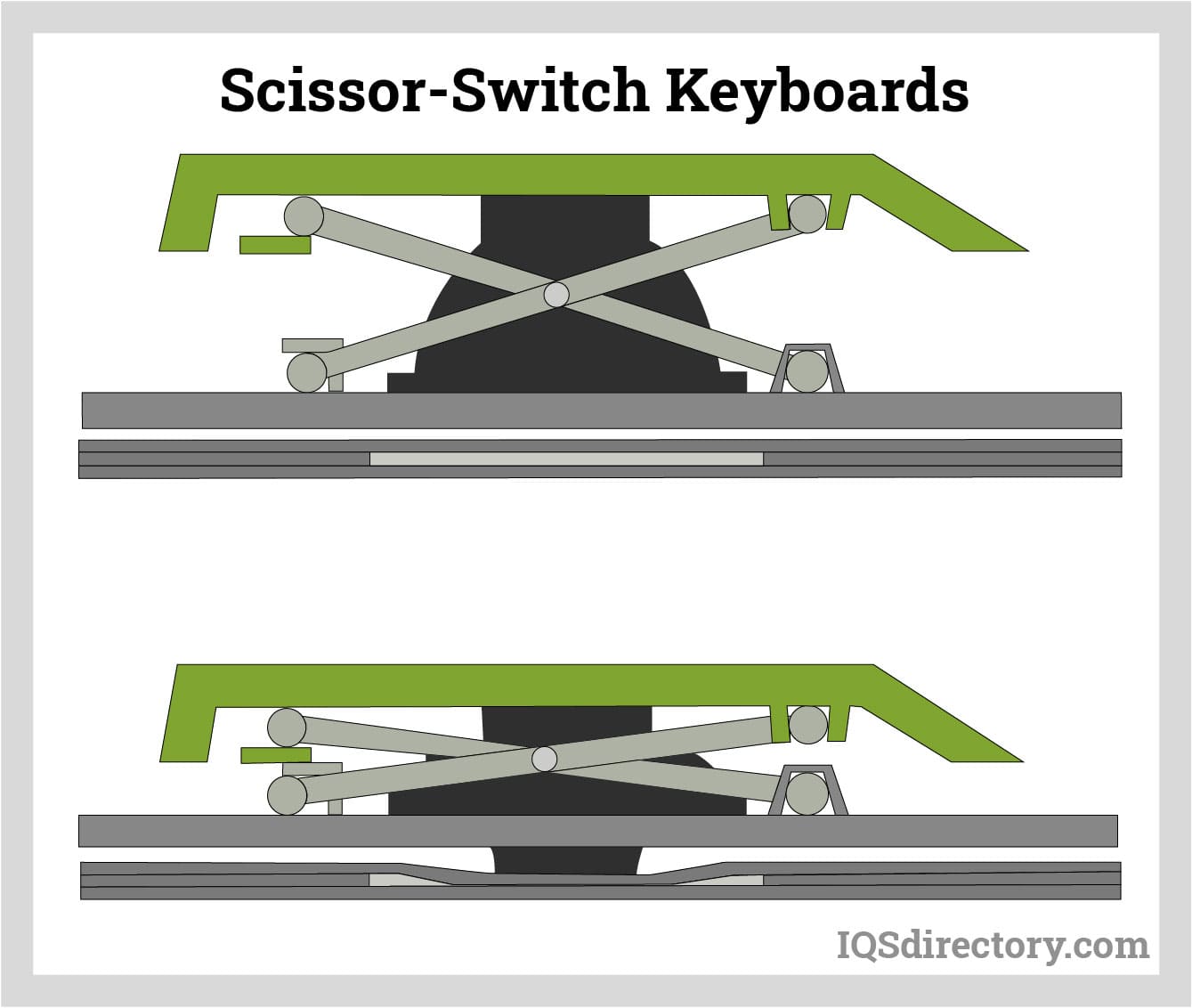Cutting-edge trends in membrane switch development
Wiki Article
Everything About Membrane Switch Over: A Comprehensive Guide for Beginners
Membrane layer switches are important parts in contemporary electronic devices, using a distinct user interface for individual communication - membrane switch. Their layered construction, consisting of overlays and conductive traces, provides capability and sturdiness. Unlike traditional mechanical buttons, membrane buttons provide a streamlined style and personalized options. Recognizing their key functions and benefits can transform item design. Nevertheless, the intricacies of their application and style factors to consider warrant additional expeditionWhat Is a Membrane Change?
A membrane layer button is a type of electric button that includes a flexible membrane layer layered over a published motherboard. This design permits a streamlined and portable interface, commonly utilized in different digital tools. Membrane switches are typically located in consumer appliances, medical tools, and commercial equipment as a result of their resilience and resistance to environmental factors.The building commonly consists of numerous layers, such as visuals overlays and adhesive backing, which offer tactile comments and secure the wiring below. The procedure of a membrane layer switch is initiated when pressure is related to the surface area, completing an electric circuit.These buttons are valued for their adaptability, enabling personalized designs and printed graphics that provide to particular interface. Their low-profile nature decreases space requirements, making them optimal for applications where typical buttons might not fit. Generally, membrane switches use a aesthetic and useful remedy for contemporary digital devices.Secret Parts of Membrane Layer Changes
Membrane changes make up numerous vital parts that contribute to their performance and efficiency. The leading layer, referred to as the overlay, offers the interface and is usually published with icons or graphics. Underneath the overlay lies a spacer layer, which separates the conductive components and protects against unintended activation. The next essential part is the graphic layer, which enhances aesthetics and assures the longevity of the design.Conductive traces, commonly made from products like silver or carbon, are printed on the circuit layer. When stress is related to the overlay, these traces come right into contact, finishing the circuit. Furthermore, a backing layer offers architectural support and can be made from materials such as polyester or polycarbonate. Together, these parts develop a reliable, user-friendly interface ideal for different applications, from home devices to commercial equipment. Recognizing these aspects is essential for anyone curious about membrane button modern technology.Just How Membrane Layer Changes Work
Comprehending just how membrane switches over function is crucial for valuing their widespread usage in various gadgets. A membrane layer switch operates with a collection of layers, including a visuals overlay, spacer, and a circuit layer. When pressure is put on the overlay, it presses the spacer layer, enabling the circuit layer to make get in touch with and finish an electric circuit. This action sends a signal to the tool, triggering a response, such as activating a light or turning on a function.Membrane switches can be developed with numerous features, consisting of responsive responses, backlighting, and personalized graphics, enhancing user interaction. Their building and construction permits a sealed design, protecting the internal components from dust, moisture, and contaminants. This toughness makes them ideal for varied applications, from customer electronic devices to commercial devices. Generally, the simpleness and performance of membrane layer switches over add to their appeal in contemporary technology.Advantages of Membrane Changes Over Mechanical Switches
While mechanical switches have long been a staple in many devices, membrane layer switches offer distinct benefits that make them increasingly appealing. One significant benefit is their slim profile, enabling more small styles and higher adaptability in item advancement. In addition, membrane layer changes feature an uniform surface area, which boosts visual charm and simplifies cleansing, making them ideal for atmospheres where health is critical.Another advantage is their resistance to dirt and wetness. Unlike mechanical switches, which can be endangered by ecological aspects, membrane switches provide a sealed user interface that safeguards against contaminants - membrane switch. Membrane layer switches commonly have a longer life expectancy due to less moving components, resulting in improved longevity and reliability.Cost-effectiveness is likewise a remarkable benefit, as membrane layer switches can be created in mass with lower manufacturing prices. These elements incorporate to position membrane buttons as a functional choice to standard mechanical options in different applicationsUsual Applications of Membrane Switches Over
Membrane buttons are extensively used in different sectors, specifically in consumer electronic devices and industrial control panels. In customer devices, they supply a sleek, user-friendly interface, while in commercial setups, they enhance longevity and functionality. Recognizing these applications highlights the versatility and functionality of membrane buttons in modern-day innovation.Customer Electronic Devices Instruments
As consumer electronics remain to progress, membrane layer buttons have ended up being a prominent option for a selection of tools as a result of their versatility and sleek design. These switches are typically discovered in smart devices, tablet computers, and push-button controls, where room is minimal and looks issue. Their reduced account and personalized additional reading layouts permit manufacturers to produce easy to use user interfaces that boost the overall individual experience. Additionally, membrane switches are typically made use of in appliances such as microwaves and coffee machine, providing intuitive control alternatives while standing up to dampness and dust. The durability and integrity of membrane layer switches over make them ideal for everyday consumer items, guaranteeing durability and consistent efficiency. On the whole, their assimilation in customer electronics mirrors a blend of functionality and modern layout.Industrial Control Panels
The applications of membrane switches expand past consumer electronics, locating considerable usage in commercial control panels. These switches are favored for their longevity and resistance to severe atmospheres, making them excellent for making and procedure control settings. They provide a trustworthy interface for operators to control machinery, monitor procedures, and adjust setups. Membrane layer switches can be customized to fit specific functional needs, including features like backlighting and responsive comments, boosting user experience. Their inconspicuous design permits integration into numerous equipment, while their capacity to endure spills, dirt, look at this now and severe temperatures assurances longevity. Generally, membrane switches add to secure and efficient operation in industrial applications, showing their convenience and efficiency popular atmospheres.Considerations for Creating Membrane Changes
When designing membrane layer switches, selecting the ideal products is important to guarantee durability and functionality. Furthermore, recognizing layer arrangement strategies can considerably affect the button's efficiency and user experience. These factors to consider play an important function in developing trusted and effective membrane switch layouts.
Material Selection Value
Product option plays a necessary duty in the layout and performance of membrane layer buttons. The picked products directly affect the switch's resilience, tactile reaction, and overall visual. Secret considerations include the substratum, which must give architectural stability while enabling flexibility, and the visuals overlay, which requires to be resistant to wear and ecological variables. Conductive products need to assure reliable electrical performance, while adhesives must offer strong bonding without compromising the switch's operation. Furthermore, compatibility with producing processes and end-user atmospheres is important; materials have to hold up against differing temperatures, humidity levels, and chemical exposure. Inevitably, suitable product choice not only enhances the membrane layer switch's performance yet additionally adds to its long life and individual satisfaction, making it a vital aspect of the design procedure.
Layer Configuration Strategies

Frequently Asked Inquiries
How Much Time Do Membrane Layer Switches Normally Last?
Membrane buttons typically have a life-span of 1 to 5 million cycles, relying on usage and ecological conditions. Factors such as style high quality and operating regularity significantly affect their sturdiness and total performance long life.
Can Membrane Changes Be Customized for Details Layouts?
Membrane layer switches can certainly be customized to fit certain layouts, permitting diverse forms, shades, and performances. This flexibility makes it possible for suppliers to tailor these switches to fulfill distinct visual and functional requirements effectively.What Products Are Used in Membrane Layer Change Construction?
Membrane switches are typically built using materials such as polyester, polycarbonate, and glue layers. These materials supply sturdiness, resistance, Our site and adaptability to ecological factors, making sure the buttons function successfully in numerous applications and problems.
Are Membrane Switches Immune or waterproof to Moisture?
Membrane switches can be created to be moisture-resistant, making use of specialized coverings and materials. Their water resistant abilities depend on building high quality and certain applications, making it necessary to examine demands for suitable efficiency in different environments.How Are Membrane Switches Fixed if Harmed?
Fixing damaged membrane switches over typically entails changing the impacted layer or circuit. Specialists may additionally apply conductive adhesive or utilize specialized repair work kits, guaranteeing functionality is recovered without full replacement of the entire button assembly. Unlike conventional mechanical switches, membrane layer switches present a streamlined style and adjustable options. A membrane layer switch is a kind of electric switch that is composed of a versatile membrane layer layered over a published circuit board. The operation of a membrane layer switch is initiated when stress is applied to the surface area, completing an electric circuit.These switches are valued for their versatility, making it possible for customized layouts and published graphics that cater to certain user interfaces. While mechanical buttons have long been a staple in several gadgets, membrane layer switches over offer distinctive advantages that make them significantly appealing. Membrane buttons usually have a longer life-span due to fewer relocating parts, resulting in boosted resilience and reliability.Cost-effectiveness is additionally a significant advantage, as membrane buttons can be produced in bulk with lower production costs.Report this wiki page